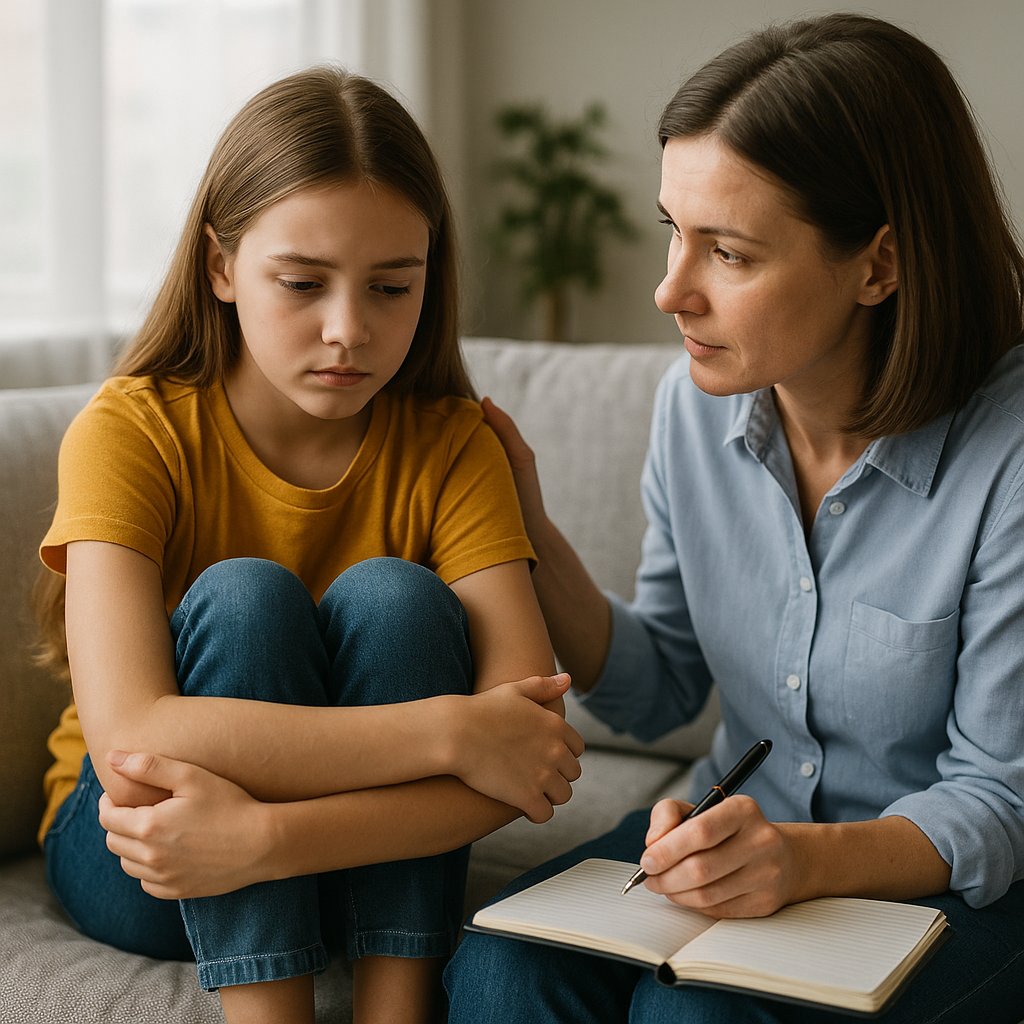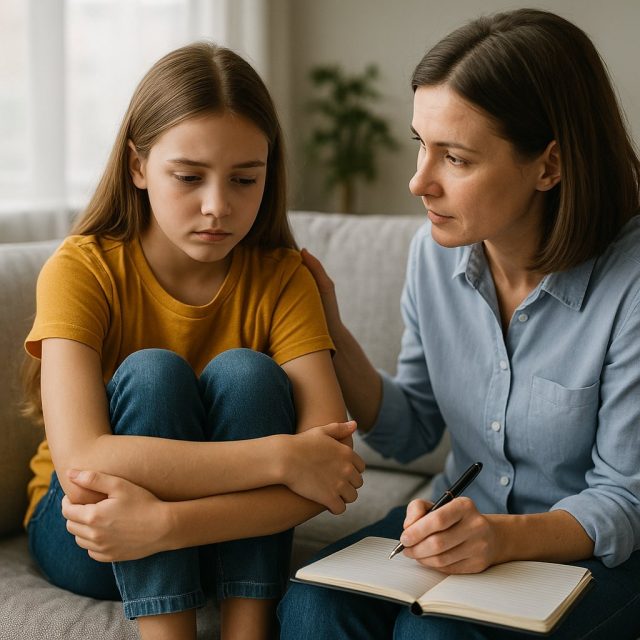
Anxiety is not just an adult issue. More children than ever are experiencing persistent worry, stress, and emotional overwhelm. The good news? Effective anxiety treatment options are available, and early intervention can make a world of difference. So, what are the best steps to take when your child shows signs of anxiety?
Table of Contents
- Understanding Childhood Anxiety
- Behavioral and Therapeutic Interventions
- Medication Options for Pediatric Anxiety
- Lifestyle and Parental Support Strategies
Understanding Childhood Anxiety
Childhood anxiety is more than occasional nervousness. It can manifest as avoidance behaviors, sleep disturbances, irritability, or even physical symptoms like stomachaches. According to the CDC, approximately 9.4% of children aged 3-17 have been diagnosed with anxiety.
Recognizing symptoms early is crucial. While it’s normal for children to worry about school or social situations occasionally, persistent anxiety that affects daily life calls for attention. Generalized Anxiety Disorder (GAD), social anxiety, and separation anxiety are among the most common types. In many cases, symptoms worsen without support.
The first step is often a conversation with a pediatrician or child psychologist. They can conduct assessments to rule out other causes and recommend anxiety treatment options tailored to your child’s needs. For families seeking guidance, Healthcare.pro offers access to mental health professionals across various specialties.
Behavioral and Therapeutic Interventions
Non-pharmacological treatments are typically the first-line response for mild to moderate anxiety in children. Cognitive Behavioral Therapy (CBT) remains the gold standard. It helps children recognize anxious thoughts, challenge unhelpful patterns, and develop healthy coping skills.
Play therapy and art therapy can also be effective, particularly for younger children who may struggle to express their feelings verbally. Therapists often use games, storytelling, or drawing as vehicles for emotional expression and problem-solving.
Exposure therapy, a subcategory of CBT, gradually introduces children to anxiety triggers in a safe, controlled environment. Over time, repeated exposure can reduce fear and improve confidence.
Parent-Child Interaction Therapy (PCIT) and family therapy are also gaining traction. These approaches involve both child and caregivers in the treatment process, enhancing communication and providing strategies for managing anxiety at home.
Therapeutic apps and digital platforms like Mightier or GoZen! are increasingly popular, offering gamified interventions rooted in evidence-based methods. For more helpful resources, visit HealingWell’s top articles.
Medication Options for Pediatric Anxiety
When therapy alone isn’t enough, medication may be recommended. Selective Serotonin Reuptake Inhibitors (SSRIs) are the most commonly prescribed class. Medications like fluoxetine (Prozac) and sertraline (Zoloft) have been approved for use in children and adolescents with anxiety disorders.
SSRIs work by increasing serotonin levels in the brain, which can help regulate mood. Although generally well-tolerated, these medications can have side effects, including nausea, sleep disturbances, or behavioral activation. Therefore, close monitoring by a medical professional is essential.
In some cases, a combination of therapy and medication yields the best results. It’s important to remember that medication isn’t a “quick fix” but rather one component of a broader treatment plan. If concerns about side effects or long-term use arise, parents should consult their child’s prescribing physician.
Benzodiazepines are occasionally used for severe cases, but due to dependency risks and sedation, they are not typically first-line treatments. Healthcare providers weigh benefits versus risks before suggesting such medications.
As always, treatment decisions should be individualized. Families can consult with qualified providers via platforms like Healthcare.pro to explore personalized medication options.
Lifestyle and Parental Support Strategies
Lifestyle adjustments play a key role in managing anxiety. Regular physical activity, adequate sleep, and balanced nutrition support emotional resilience. Outdoor play, mindfulness exercises, and journaling can be excellent outlets for anxious energy.
Parental involvement is equally important. Children often mirror adult behavior, so managing parental stress is essential. Encouraging open communication, establishing routines, and creating a safe space for expression help children feel more secure.
Some parents explore complementary therapies such as yoga, aromatherapy, or acupuncture. While not replacements for clinical treatment, these can be valuable additions when integrated thoughtfully.
Digital tools also aid in ongoing management. Mobile apps for relaxation, guided meditation, and mood tracking help children and parents stay engaged in treatment goals. In today’s digital era, integrating such tools can enhance accessibility and support ongoing progress.
If you’re interested in how digital platforms are supporting healthcare content, eHealthcare Solutions provides insights into how digital marketing is reshaping the mental health conversation.
Conclusion
Understanding and addressing anxiety in children takes a proactive and compassionate approach. With the right anxiety treatment options, children can learn to navigate their emotions and thrive. Early recognition, consistent support, and a tailored treatment plan make all the difference.
Parents should remember that they’re not alone. With a variety of therapeutic, medicinal, and supportive strategies available, finding a path forward is entirely possible.
Frequently Asked Questions
What are the first signs of anxiety in children?
Look for changes in behavior such as excessive worry, irritability, physical complaints, or avoidance of certain activities.
Is medication always necessary for childhood anxiety?
No, many children improve with therapy alone. Medication is considered when anxiety significantly disrupts daily functioning.
Are anxiety medications safe for children?
When prescribed and monitored by a healthcare professional, SSRIs are generally safe and effective for pediatric anxiety.
Can lifestyle changes really help with anxiety?
Absolutely. Consistent sleep, physical activity, and stress-reducing activities can support overall mental wellness.
Where can I find a therapist for my child?
Resources like Healthcare.pro help connect families with licensed mental health professionals in their area.
Disclaimer
This content is not medical advice. For any health issues, always consult a healthcare professional. In an emergency, call 911 or your local emergency services.




